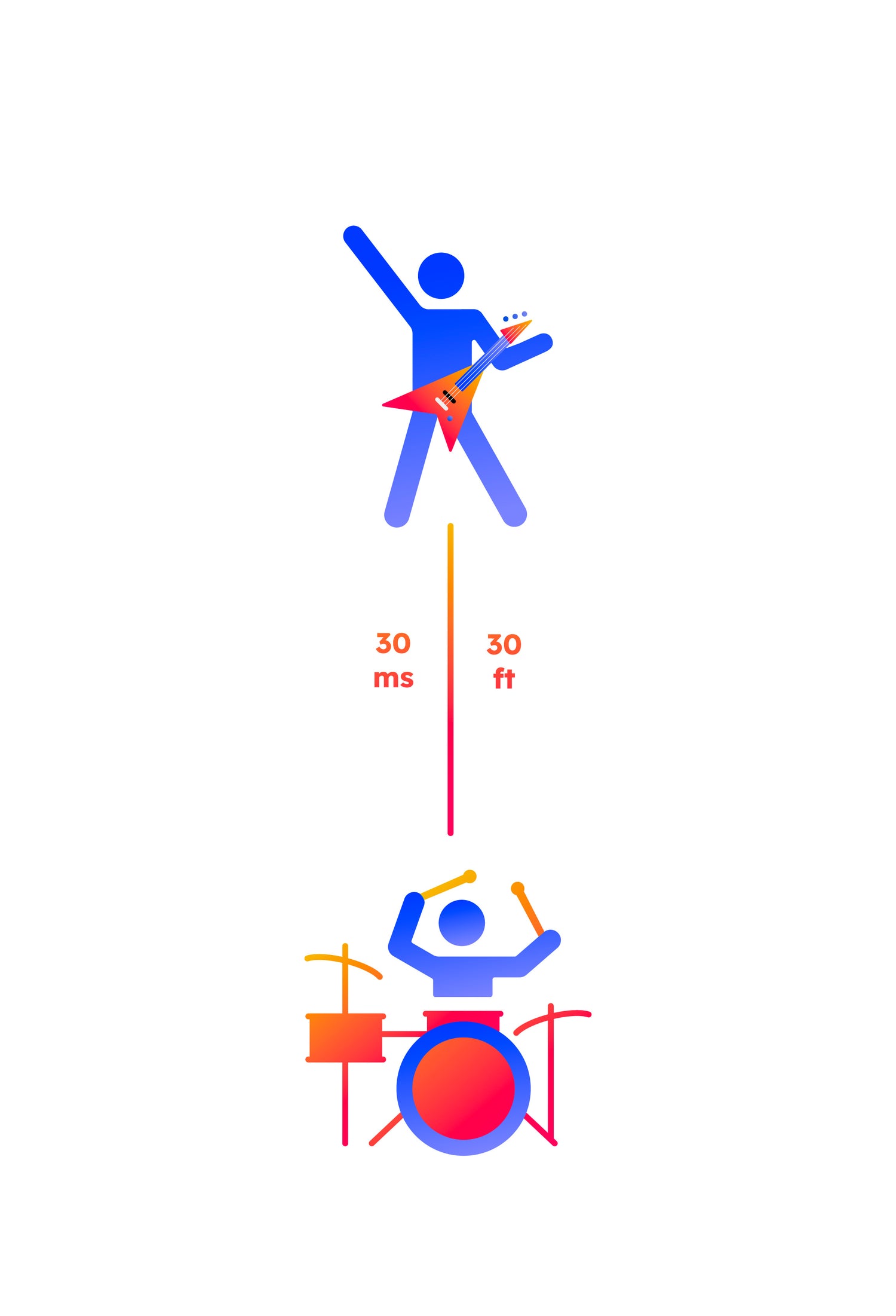About Audio Latency and Music

How does latency affect playing in time?
Audio latency is the delay between when a note is played and when it’s heard by the player(s). Musicians are always subject to some degree of audio latency. Sound travels at roughly one foot per millisecond (ms), so even sitting next to a guitar amp, you experience about 3ms of audio latency. This usually isn’t a problem because the delay is so minimal that you perceive the sound as instant.
But when we add hundreds of miles of networking cables into the mix, the audio latency can get bad enough that you start to notice the delay, making it harder to play in time. When you’re in a session, we want you to feel like you're jamming with everyone in the same room, so we aim for an audio latency of approximately 30ms or less: the equivalent of being about 30 feet away from other players on stage.
How to achieve low audio latency
Use the following guidelines for low-latency sessions:

Distance
For the best experience, we recommend limiting sessions to players that are within 500 miles of each other. Keeping all session members within a 500-mile radius allows for rhythmically tight sessions that feel like a live jam. However, it’s important to note that individual experiences may vary due to differences in internet infrastructure, among other factors.
Cable or fiber internet
We recommend using either fiber or cable internet for the lowest possible latency. Each is capable of low latency, adding the least possible delay to your audio signal. These internet types also provide low latency jitter, making for a smoother experience.
Wired Headphones
While wireless Bluetooth headphones are convenient, they introduce additional latency, so we recommend using wired headphones to keep your sessions snappy and responsive. Psst… the audio quality is better, too!

